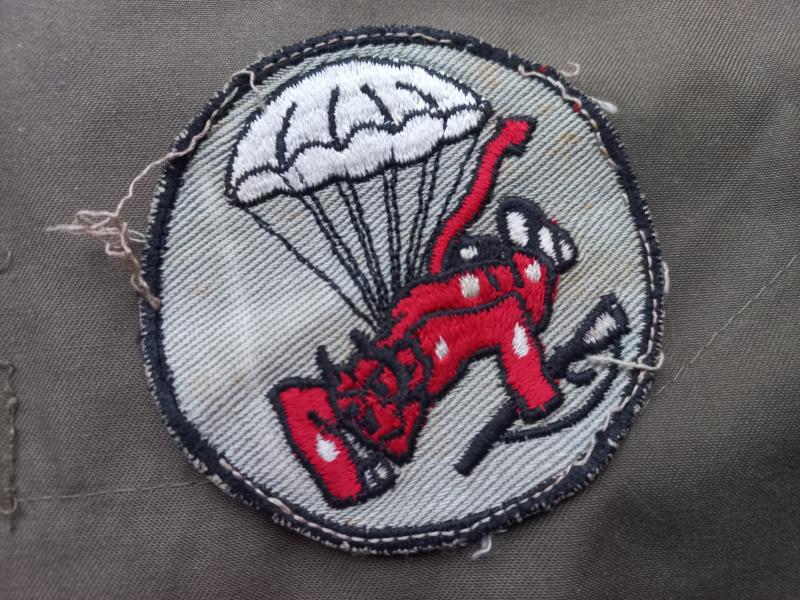A nice removed from uniform 508th Parachute Infantry Regiment, 82nd Airborne Division pocket patch
This ia a good example of a removed from uniform 508th Parachute Infantry Regiment, 82nd Airborne Division pocket patch. The 508th Parachute Infantry Regiment (508th PIR) was activated during World War II on 20 October 1942 at Camp Blanding, Florida. Lieutenant Colonel Roy E. Lindquist formed the unit and remained its commander throughout the war. The 508th Parachute Infantry Regiment participated in Operation Overlord, jumping into Normandy at 2:15 a.m. on 6 June 1944. The 82nd objectives were to capture Sainte-Mère-Église, secure crossings at the Merderet River near La Fiere and Chef-du-Pont, and establish a defensive line north from Neuville-au-Plain to Breuzeville-au-Plain. Portions of the 508th regrouped and remained in contact with German forces until relieved on 7 July when they became the divisional reserve force. On 13 July, they were transported back to England in two LSTs and returned to their station at Wollaton Park. After their success in Normandy, the 508th PIR returned to its billet at Wollaton Park and prepared for its part in Operation Market Garden, jumping on 17 September 1944. After being relieved in the Netherlands, they continued fighting the Germans in the longest-running battle on German soil ever fought by the U.S. Army, then crossed the border into Belgium. The 508th later played a major part in the Battle of the Bulge in late December 1944, during which they screened the withdrawal of some 20,000 troops from St. Vith and defended their positions against the German Panzer divisions. They also participated in the assault led by the 2nd Ranger Battalion to capture Hill 400. The regiment saw little further service in the war and in April 1945 were detached from command of the 82nd Airborne Division, coming under direct control of the First Allied Airborne Army. The 508th Parachute Infantry Regiment returned to the United States soon after, settling at Camp Milner, New Jersey and was inactivated on 25 November 1946. The badge measures 7.3cm and is in a nice removed from uniform condition.
Code: 51745


